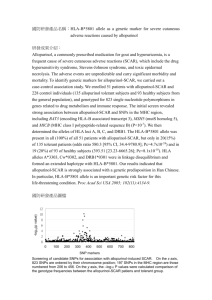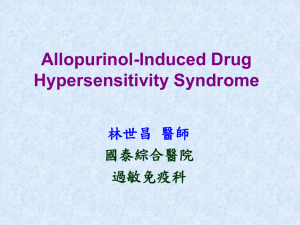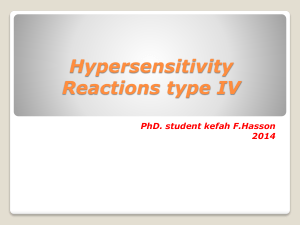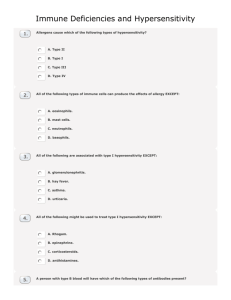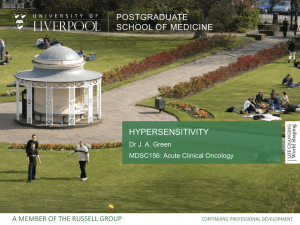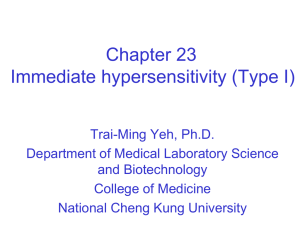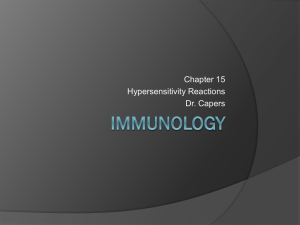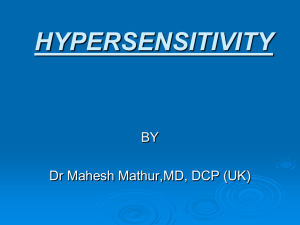Risk of Allopurinol induced serious cutaneous adverse reactions
advertisement
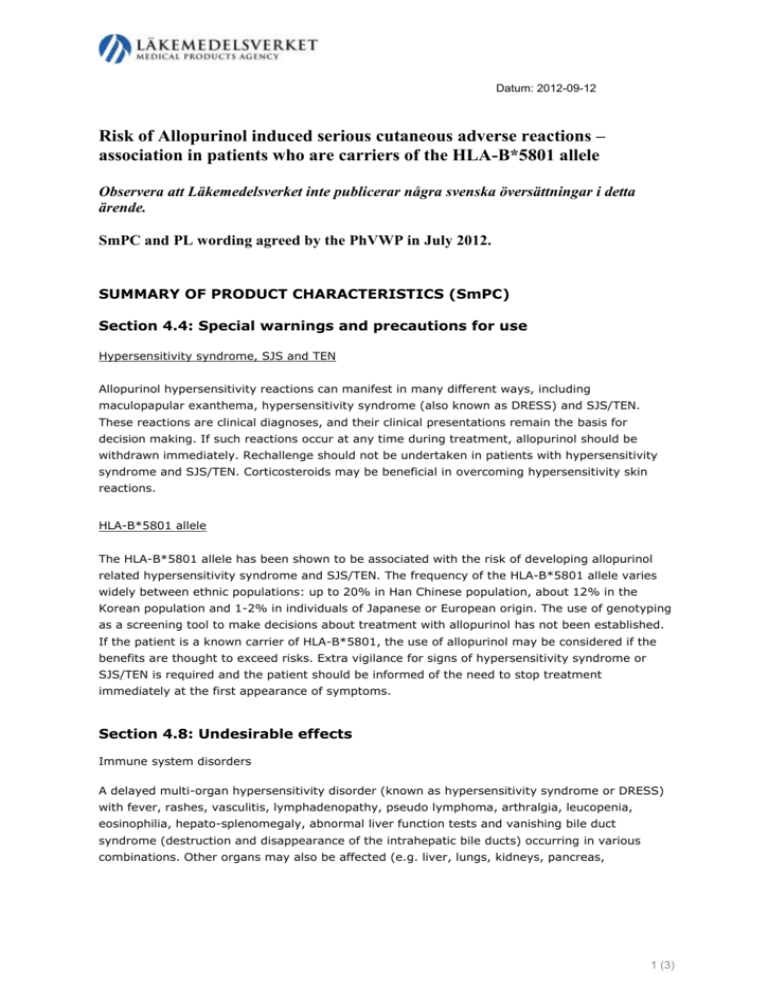
Datum: 2012-09-12 Risk of Allopurinol induced serious cutaneous adverse reactions – association in patients who are carriers of the HLA-B*5801 allele Observera att Läkemedelsverket inte publicerar några svenska översättningar i detta ärende. SmPC and PL wording agreed by the PhVWP in July 2012. SUMMARY OF PRODUCT CHARACTERISTICS (SmPC) Section 4.4: Special warnings and precautions for use Hypersensitivity syndrome, SJS and TEN Allopurinol hypersensitivity reactions can manifest in many different ways, including maculopapular exanthema, hypersensitivity syndrome (also known as DRESS) and SJS/TEN. These reactions are clinical diagnoses, and their clinical presentations remain the basis for decision making. If such reactions occur at any time during treatment, allopurinol should be withdrawn immediately. Rechallenge should not be undertaken in patients with hypersensitivity syndrome and SJS/TEN. Corticosteroids may be beneficial in overcoming hypersensitivity skin reactions. HLA-B*5801 allele The HLA-B*5801 allele has been shown to be associated with the risk of developing allopurinol related hypersensitivity syndrome and SJS/TEN. The frequency of the HLA-B*5801 allele varies widely between ethnic populations: up to 20% in Han Chinese population, about 12% in the Korean population and 1-2% in individuals of Japanese or European origin. The use of genotyping as a screening tool to make decisions about treatment with allopurinol has not been established. If the patient is a known carrier of HLA-B*5801, the use of allopurinol may be considered if the benefits are thought to exceed risks. Extra vigilance for signs of hypersensitivity syndrome or SJS/TEN is required and the patient should be informed of the need to stop treatment immediately at the first appearance of symptoms. Section 4.8: Undesirable effects Immune system disorders A delayed multi-organ hypersensitivity disorder (known as hypersensitivity syndrome or DRESS) with fever, rashes, vasculitis, lymphadenopathy, pseudo lymphoma, arthralgia, leucopenia, eosinophilia, hepato-splenomegaly, abnormal liver function tests and vanishing bile duct syndrome (destruction and disappearance of the intrahepatic bile ducts) occurring in various combinations. Other organs may also be affected (e.g. liver, lungs, kidneys, pancreas, 1 (3) myocardium, and colon). If such reactions do occur, it may be at any time during treatment, Zyloric should be withdrawn immediately and permanently. When generalised hypersensitivity reactions have occurred, renal and/or hepatic disorder has usually been present particularly when the outcome has been fatal. 2 (3) PATIENT INFORMATION LEAFLET (PIL) Section 2: Before you take [product name] Serious skin rashes (Hypersensitivity syndrome, Stevens- Johnson syndrome, toxic epidermal necrolysis) have been reported with the use of allopurinol. Frequently, the rash can involve ulcers of the mouth, throat, nose, genitals and conjunctivitis (red and swollen eyes). These serious skin rashes are often preceded by influenza-like symptoms fever, headache, body ache (flu-like symptoms). The rash may progress to widespread blistering and peeling of the skin. These serious skin reactions can be more common in people of Han Chinese or Thai origin. If you develop a rash or these skin symptoms, stop taking allopurinol and contact your doctor immediately. Section 4: Possible side effects If you experience any of the following, stop your tablets and tell your doctor immediately: Rare (affects less than 1 in 1000 people) ……. fever and chills, headache, aching muscles (flu-like symptoms) and generally feeling unwell any changes to your skin, for example ulcers of the mouth, throat, nose, genitals and conjunctivitis (red and swollen eyes), widespread blisters or peeling Serious hypersensitivity reactions involving fever, skin rash, joint pain, and abnormalities in blood and liver function tests (these may be signs of a multi-organ sensitivity disorder). 3 (3)
